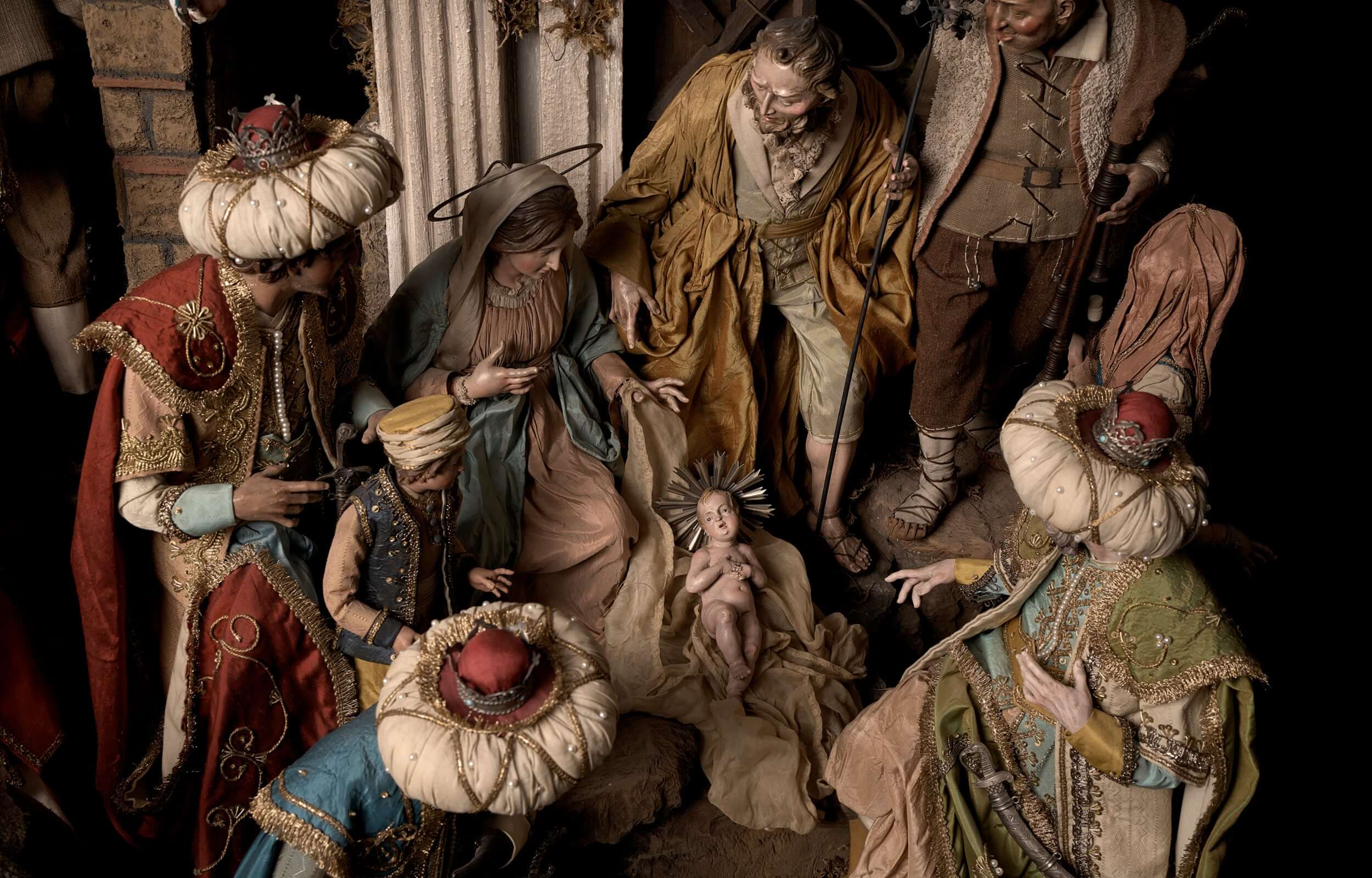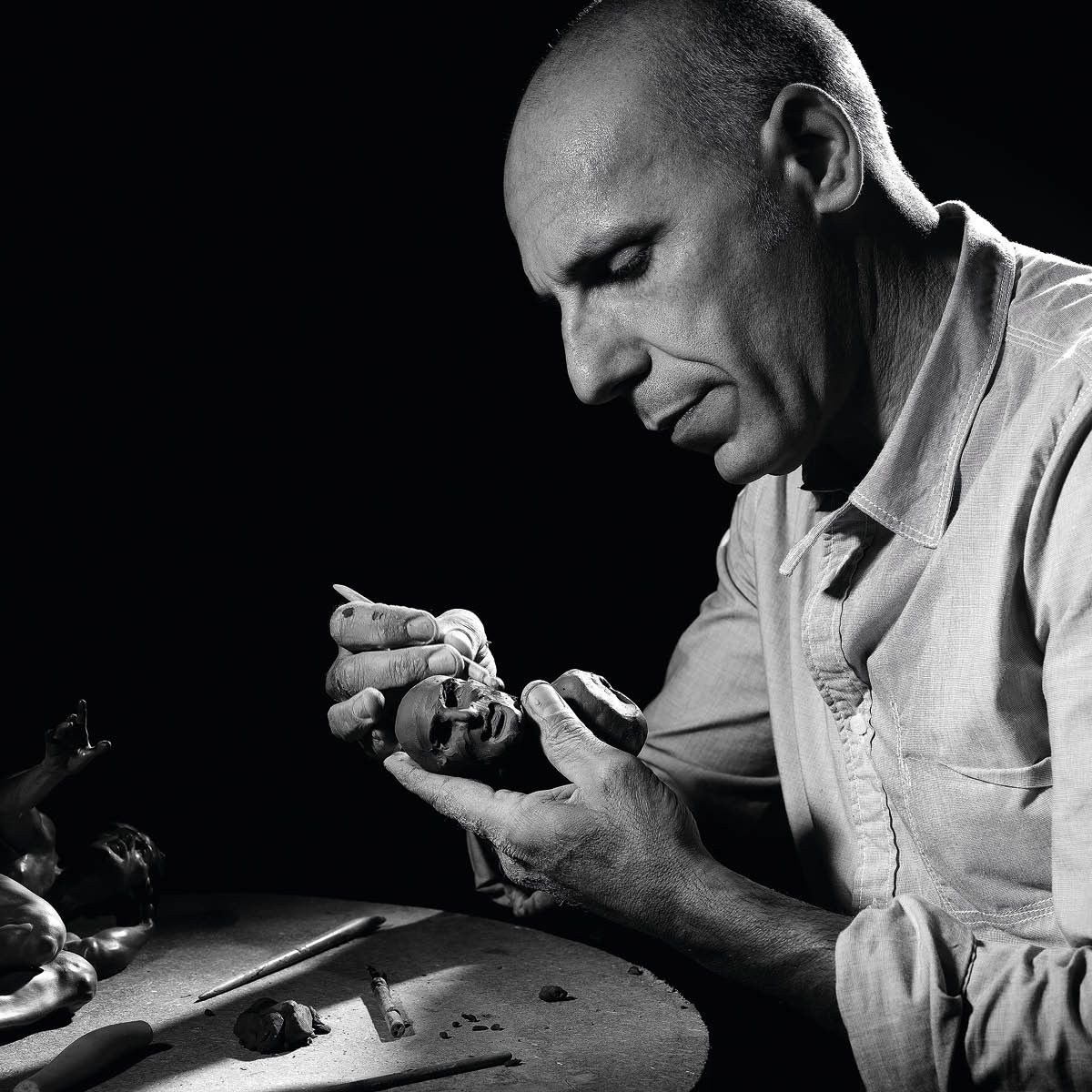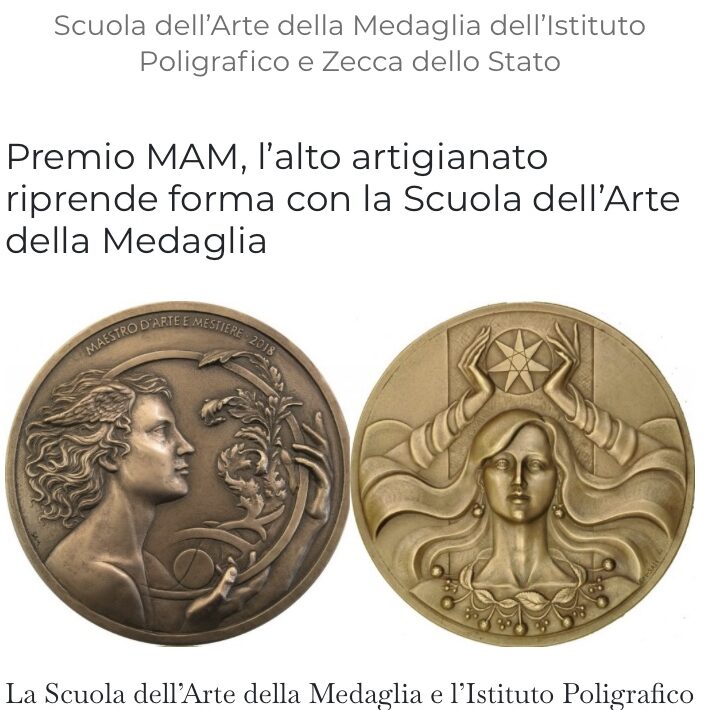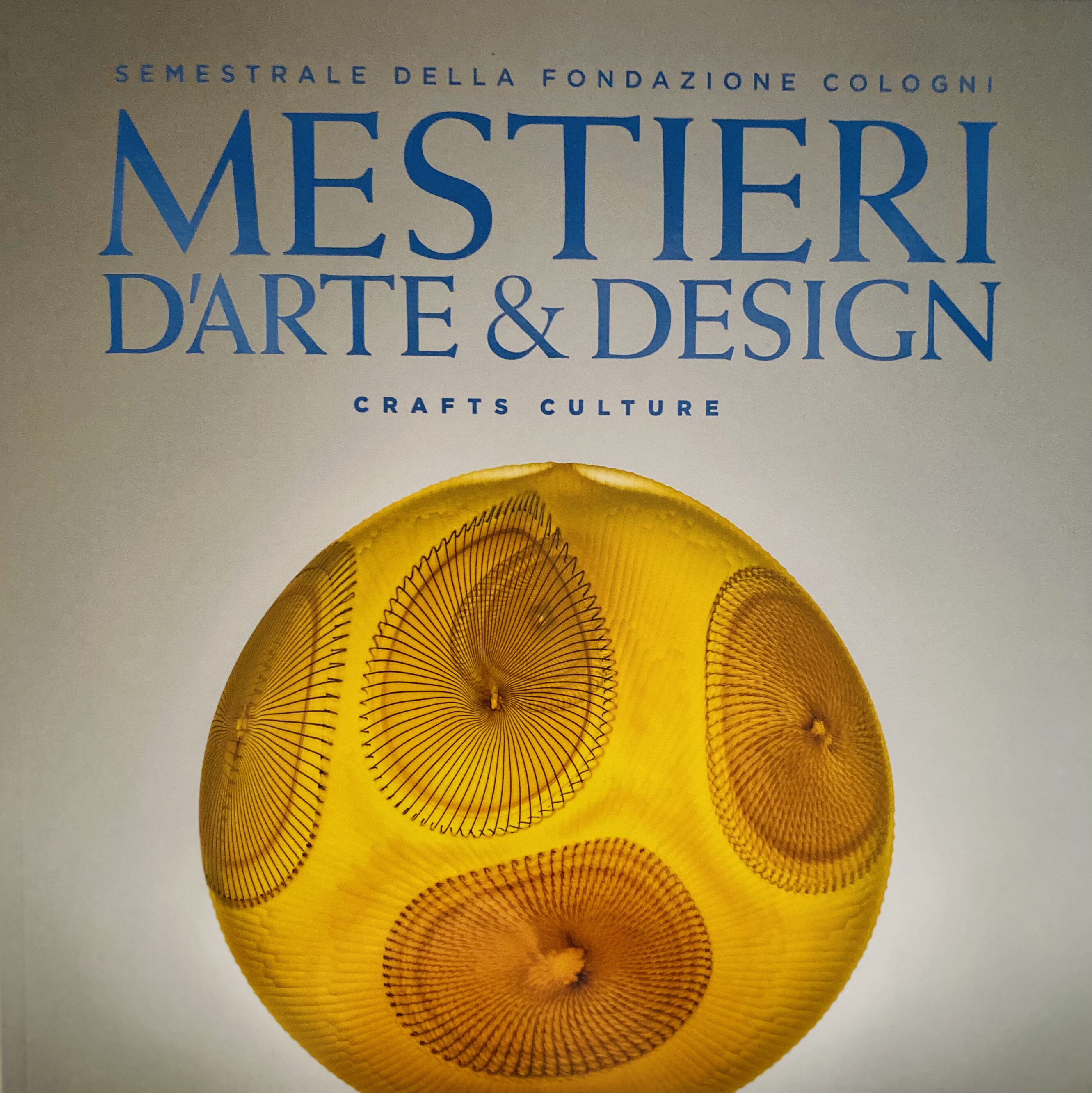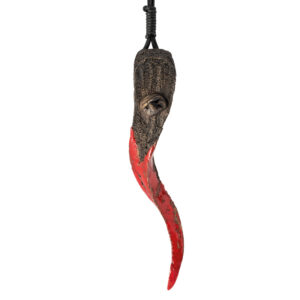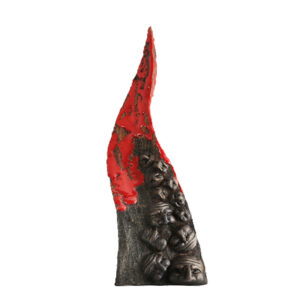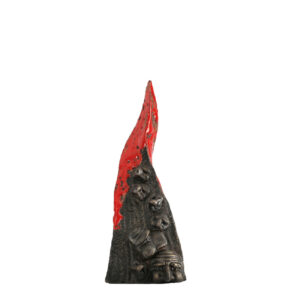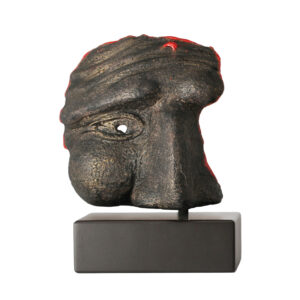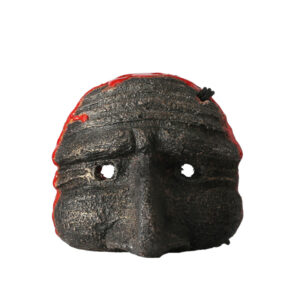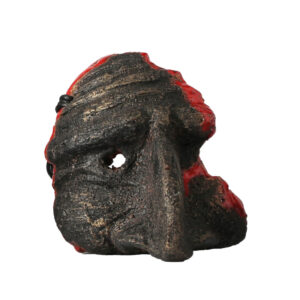I,
born
in the nativity scene
A stick of clay, a small table, a neon light and so very, very cold.
The hands, the unique and extraordinary tools of a craftsman, were freezing. Just a warm cloth could heat them and make them flexible in order to shape the clay and make the Neapolitan nativity scene, a wonderful work in transformation. ↴
I grew up in my father’s workshop, within the beating heart of the house, where I saw my brothers, my sisters and my mom working on hand-painted and cooked pottery. I immediately understood that my destiny was to model the clay, paint, shape the Neapolitan shepherds, since my story, my life was a genetic pre-ordering. A continuation of blood. Unlike many who choose their job once they become adults, from an early age I simply followed the river that generated me, becoming more and more aware of what I do. For me it is always a great joy to be able to communicate the profound meaning of my works to those who commission them, buy them and take them to their own world. And then these persons call me back because they caught that sense with all their soul. This is precisely my wish, to create a nativity scene work that like any art work goes beyond its economic value.
I am Ulderico Pinfildi, people speak of me as an artist. I leave it to others to give me a definition. I am and I always feel like a worker. In my shop in Naples I continue this story. My works, my shepherds, every little or big sculture are like my children to me and they bear the mark of birthright. Anyone who takes home one of my works takes with them all my story, all my passion and all my love that I transferred to the work itself. Whoever buys one of my works enters the river that generated me and allows to be transported by its waters.
The XVIII
Century
goes on scene
In my long experience as a nativity scene artist I have developed an interest in the study of techniques, tools and above all inspiration.
The history of art teaches us that over the centuries artists have observed each other, each has tried to study the techniques of the other. It happened to me too.
But what did the painters look at while carrying out their works? Who were they inspired by? Which role did sculpture play for a painter? What about painting for a sculptur? ↴
To these questions I found na answer trhrough the observation of the nativity scene art. One of the most striking examples is the “beggar” accademy, exhibited in Naples at the San Martino Museum, clearly inspired by Adam painted by Michelangelo on the vault of the Sistine Chapel.
In this way I discovered the potentialilty that the boundless panorama of artistic works can offer. So I started to make Madonnas inspired by the works of Raffaello and Caravaggio, academies modeled by looking at the opposite works of Michelangelo, I took the inspiration from the faces depicted in the paintings of the Seventeeth Century, promptly reproduced in an identical physiognomy of the somatic features in the most famous nativity scenes of the Eighteenth Century. The same same nativity scenes scenes are inspired by the paintings and drawings of Giacinto Gigante.
These are not copies or imitations, but references, allusions to famous works in a way of reading that still today motivates artists to create new figures and settings, through the continuous mention of works great artists that have left an indelible sign as a lifeblood of inspiration.
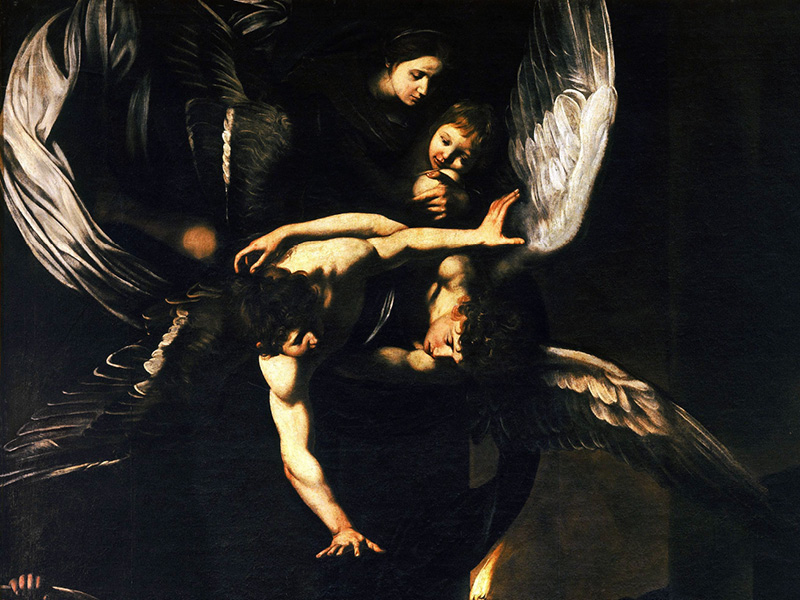
The XVIII
Century
goes on scene
In my long experience as a nativity scene artist I have developed an interest in the study of techniques, tools and above all inspiration.
The history of art teaches us that over the centuries artists have observed each other, each has tried to study the techniques of the other. It happened to me too.
But what did the painters look at while carrying out their works? Who were they inspired by? Which role did sculpture play for a painter? What about painting for a sculptur? ↴
To these questions I found na answer trhrough the observation of the nativity scene art. One of the most striking examples is the “beggar” accademy, exhibited in Naples at the San Martino Museum, clearly inspired by Adam painted by Michelangelo on the vault of the Sistine Chapel.
In this way I discovered the potentialilty that the boundless panorama of artistic works can offer. So I started to make Madonnas inspired by the works of Raffaello and Caravaggio, academies modeled by looking at the opposite works of Michelangelo, I took the inspiration from the faces depicted in the paintings of the Seventeeth Century, promptly reproduced in an identical physiognomy of the somatic features in the most famous nativity scenes of the Eighteenth Century. The same same nativity scenes scenes are inspired by the paintings and drawings of Giacinto Gigante.
These are not copies or imitations, but references, allusions to famous works in a way of reading that still today motivates artists to create new figures and settings, through the continuous mention of works great artists that have left an indelible sign as a lifeblood of inspiration.

Every
piece is unique
The secrets of artists from the past are my starting point.
I have always drawn on their sources of inspiration, trying to understand which tools they used to model, carve and smooth the clay. This work of research has been of great help to me to apply and innovate these ancient techniques today.
It is not easy to make nativity scene figures. It is a work that requires special knowledge and materials often used in other sectors, sometimes completely unrelated to the world of fine arts.
It is necessary to know how to model, paint, but also know how to use glass to make the eyes of the statue of the nativity scene, carve and chisel the wood, prepare the painting, sew the silks, cottons and leather. One must be familiar with the splints, the cutters or the lathe. My research also concerns materials, which are increasingly difficult to find. There is no specialized shop where to find the right materials to make a Neapolitan shepherd and to give harmony to these small statues. The most suitable materials to build shepherds are produced by crafts that are now disappearing, they are precious in their imperfection precisely because they are handmade and are unique thanks to their imperfections.
Each piece is unique and represents the result of my continuous study, destined to enrich my nativity scene works more and more.
Everything starts here
Like
a craftsman
In telling the craftsmanship of my work I can only start from my origins ↴
It is impossible for a craftsman to separate private life from work. I grew up in the workshop with my father, modeler, ceramist, trainer, an eclectic artist and with my mother who paints in the workshop with my father. My life and my work have always been two worlds that represent a whole.
This leads me to have great respect for artisans, because behind every large or small work there is a personal experience and the great passion that every craftsman dedicates to his world. I know my world of nativity scene figure modeler well. It is an ancient craft.
The gestures that are made with the hands in shaping clay or carving wood have been the same for centuries. This is the fascination of a craftsmanship, its uniqueness.
The materials are the same for everyone but the man is what still makes the difference today .
The artist who with his creativity and his own hands transforms the material giving life to his unique and unrepeatable creations.
Life
to sculptures
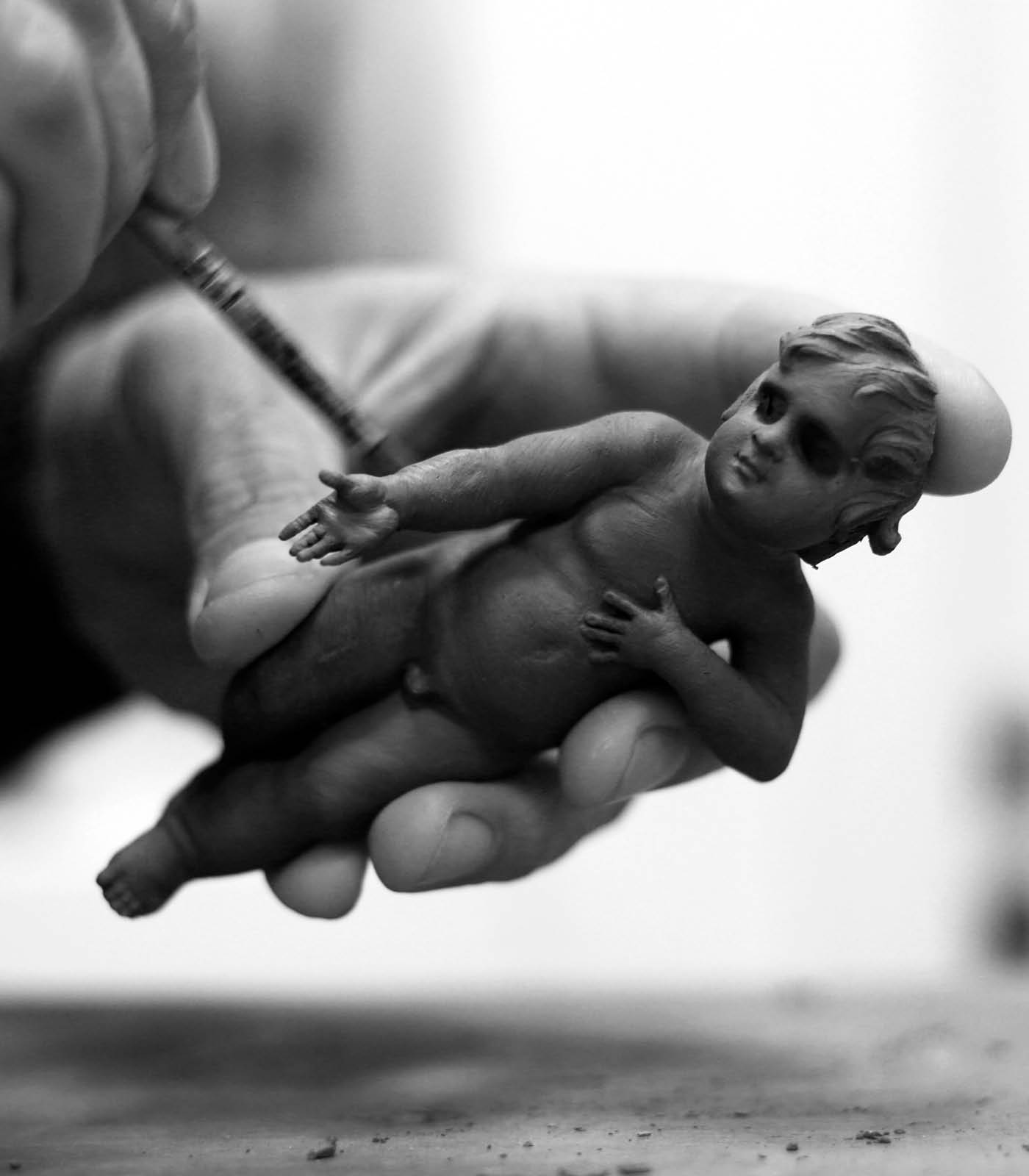
In giving shape to the nativity scene figure, I start from the study of the main anatomical elements, those related mainly to movement and expressions, such as head, face, eyes, bust and limbs, which I am going to create with manual, meticulous and detailed work to achieve the perfect result, that is create a character who plays a role within the nativity scene. ↴
If it true that the nativity scene representes a great stage in which life moves as it did in the Naples of the Eighteenth Century, consider each shepherd as a character who plays a role defined in a unique and exclusive way by the face, the clothing, the color of the complexion and the accessories with which it is adorned. A set of characteristics from which we can understand the peculiarities of the individual shepherd, starting from the place of origin up to the profession he carries out, from social extraction to ethnic origins: we will therefore find noble people, beggars, rustic, gypsies and also Asians, Circassians, Turks, Africans and Georgians. I am therefore convinced that the making of a shepherd is not only the result of inspiration and inventiveness but also the result of a careful historical and custom analysis of the period in which the nativity scenes, all arranged as in a still image, which for more than three hundred years it has retained unchanged its charm.
Head
The head of the nativity scene figure represents the key element of the shepherd, because it represents the face of the actor, the true principal character of the nativity scene.
Modeled in clay, at this stage it already presents the orbital cavities in which the glass eyes will be embedded.
Manequin
Of iron wire and tow (or hemp) – Structure of fundamental importance for the success of the nativity scene, it establishes its shape and volume and, due to the characteristics of the material with which is built, it makes its movement soft and spontaneous
Wooden hands and feet
As in the past, even today they are made of lime or maple wood, they are carved and chiseled by hand and represent an indicator of the quality of the work.
Due to the quality of the materials used, the movement of the figures on the scene is fluid and natural and the risk of breaking the limbs is considerably reduced.
Eyes
They originate from a sphere of blown glass which is subsequently cut so as to obtain two oval forms, inside which the iris, the pupil and the white part of the ocular sphere are painted. Subsequently, after cooking, they are embedded in the head.
Dress
To complete the shepherd, the dress is made of silk. Golden gallons, trimmings, silver buttons are often used which make the custome particularly valuable. Inspired by the clothes that were worn in the Kingdom of the Two Sicilies, the dress represents an authentic mention of the customes of the time, the result of a thorough and faithful study.
Characters
anatomy
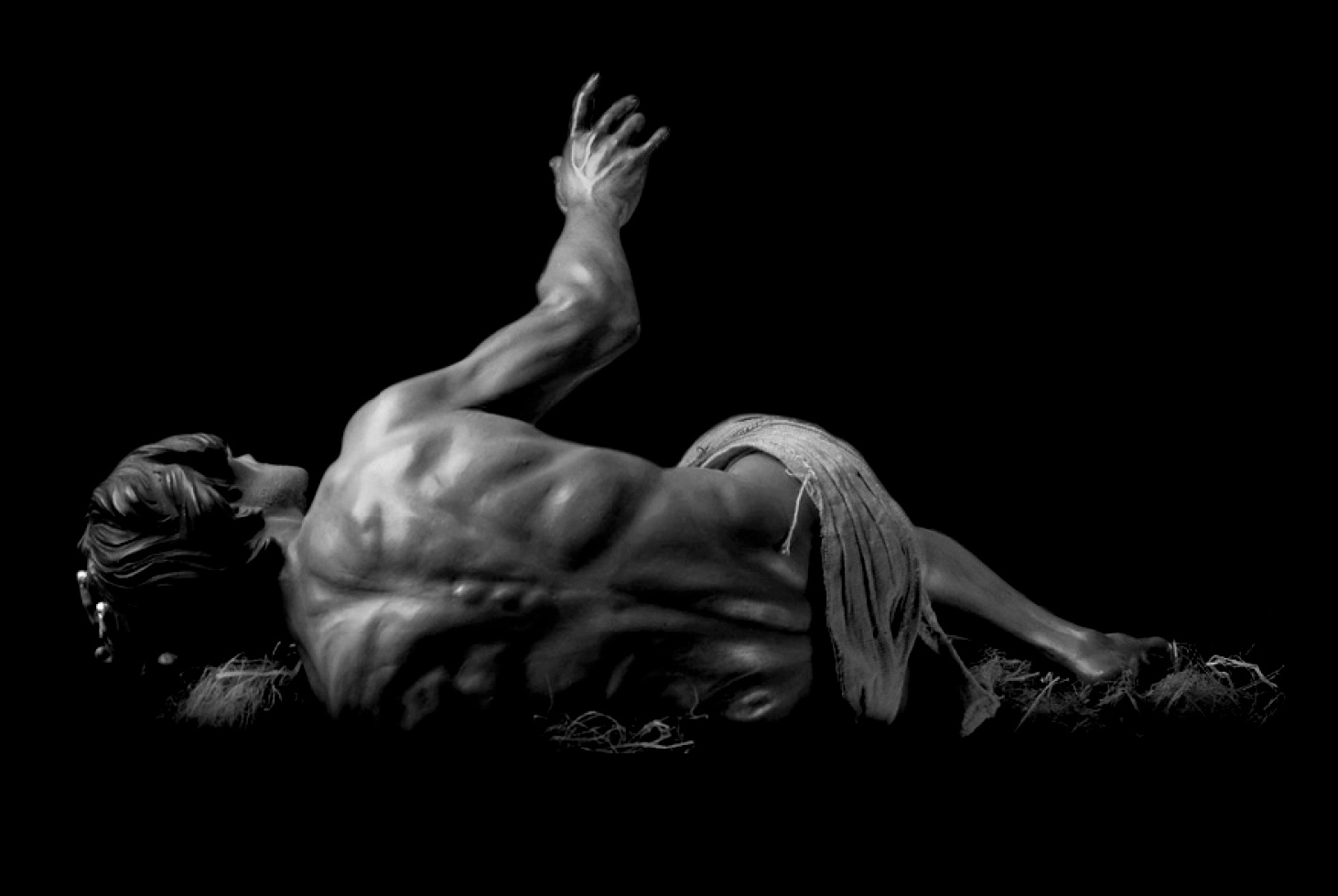
Modeling is the most fascinating part of my job for me.
The feeling that is felt when an idea, a thought come to life through my hands to become a creation of mine is beyond description.
At the basis of each creation, however, there is also the study of anatomy, an in depth analysis of the human figure which, as for the artists of the past, still today represents a necessary guide for any artist as for a writer it is essential to study the classics. Even in the art of the nativity scene, the study of anatomy is essential.
Modeling a face, giving a realistic expression to his gaze, deepening the analysis of the musculature of the human body in its entirety, are fundamental steps for creating a nude, what in my field goes by the name of “Academy”. A figure created according to these canons becomes the greatest satisfaction for the sculptor.
Over time I realized that my luck is precisely that of being able to express myself, tell my thoughts, my feelings by modeling my sculptures, as does the writer with his pen.
Hoping, in humbleness, to leave a mark.

